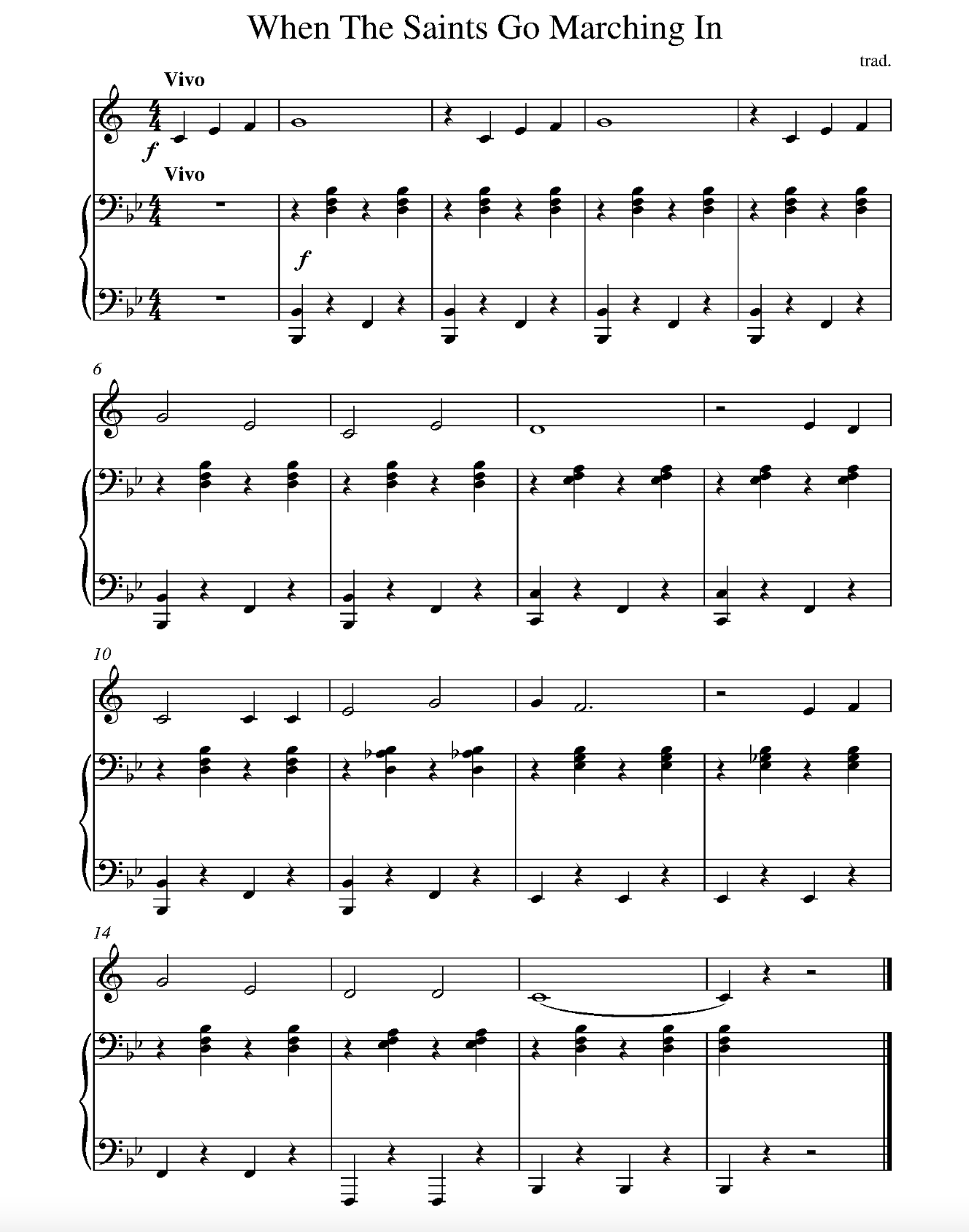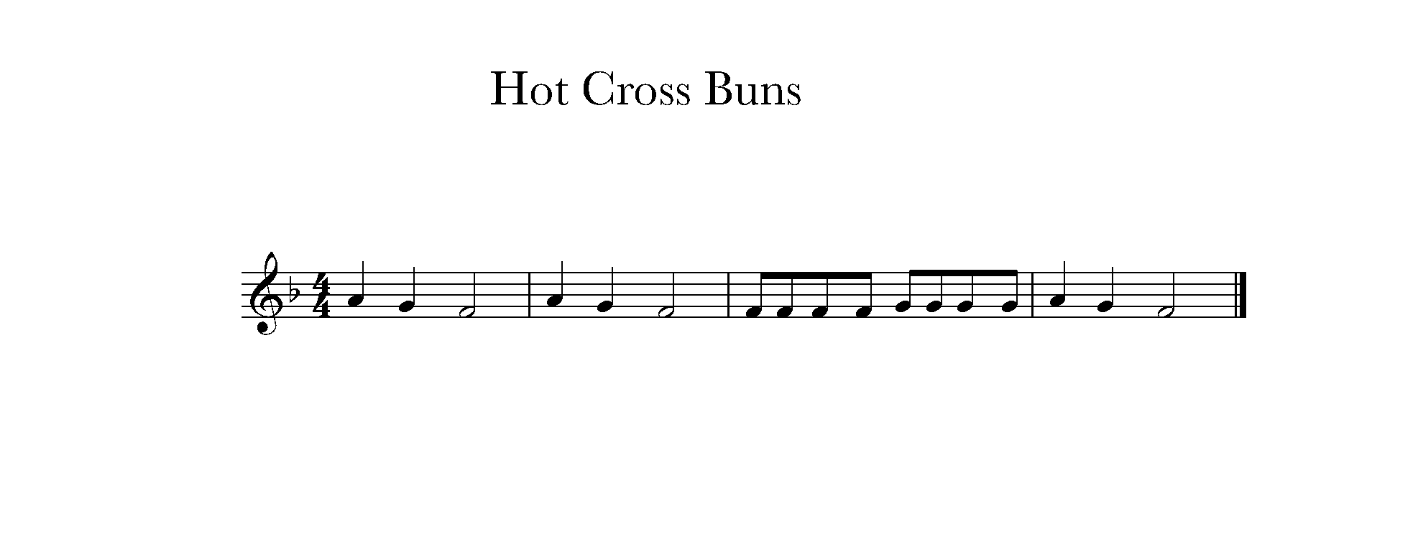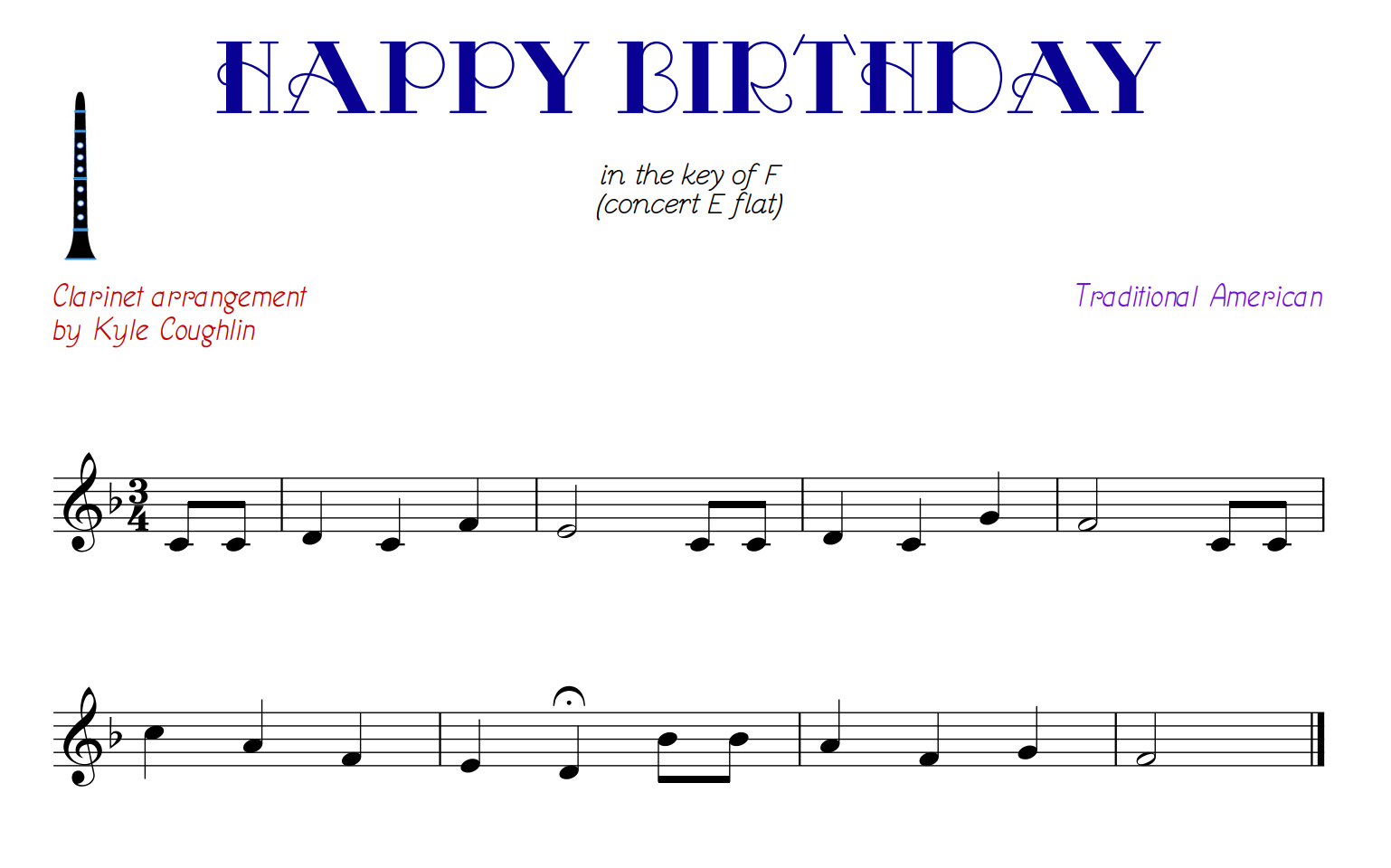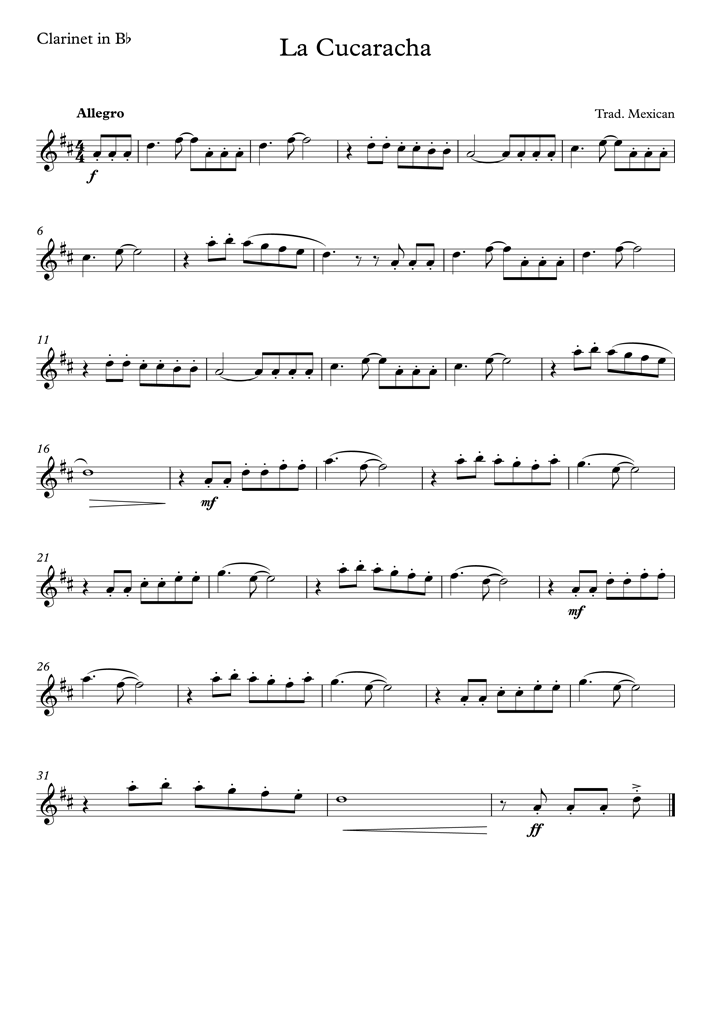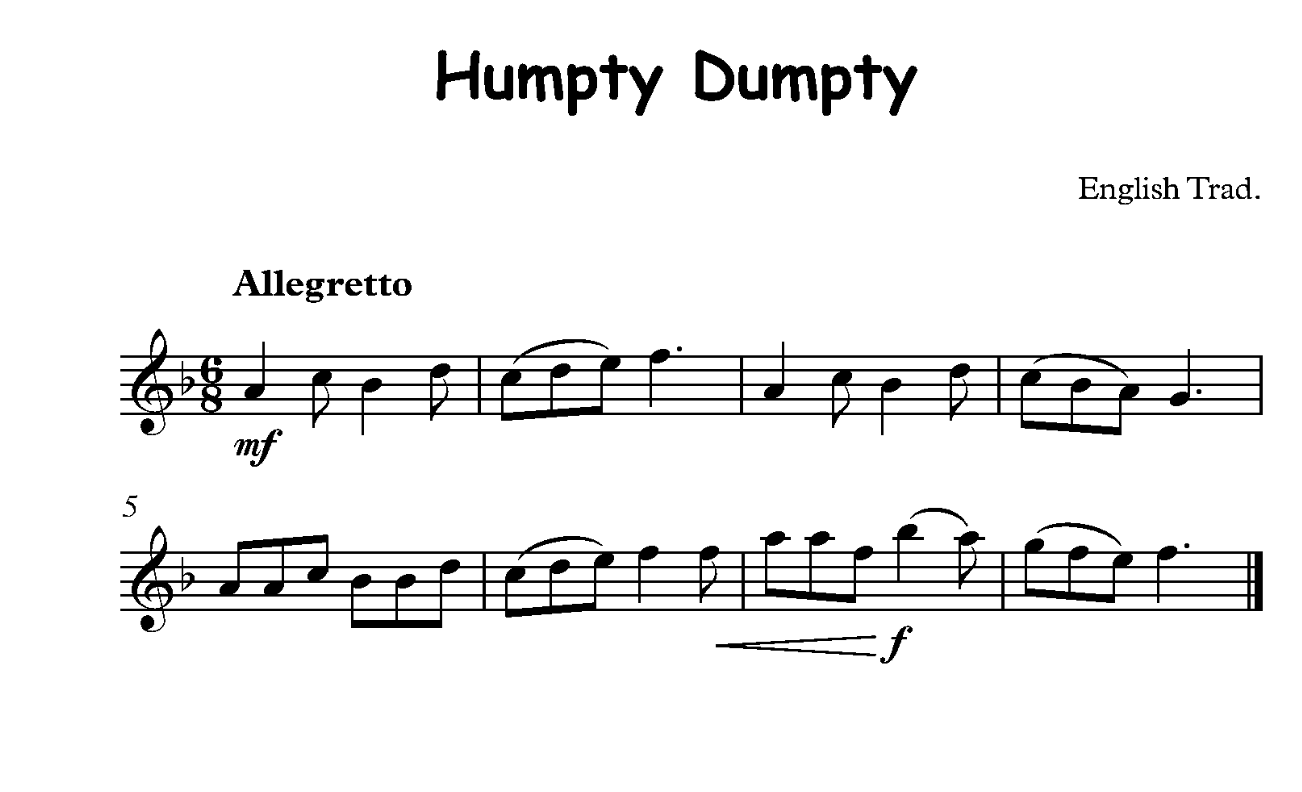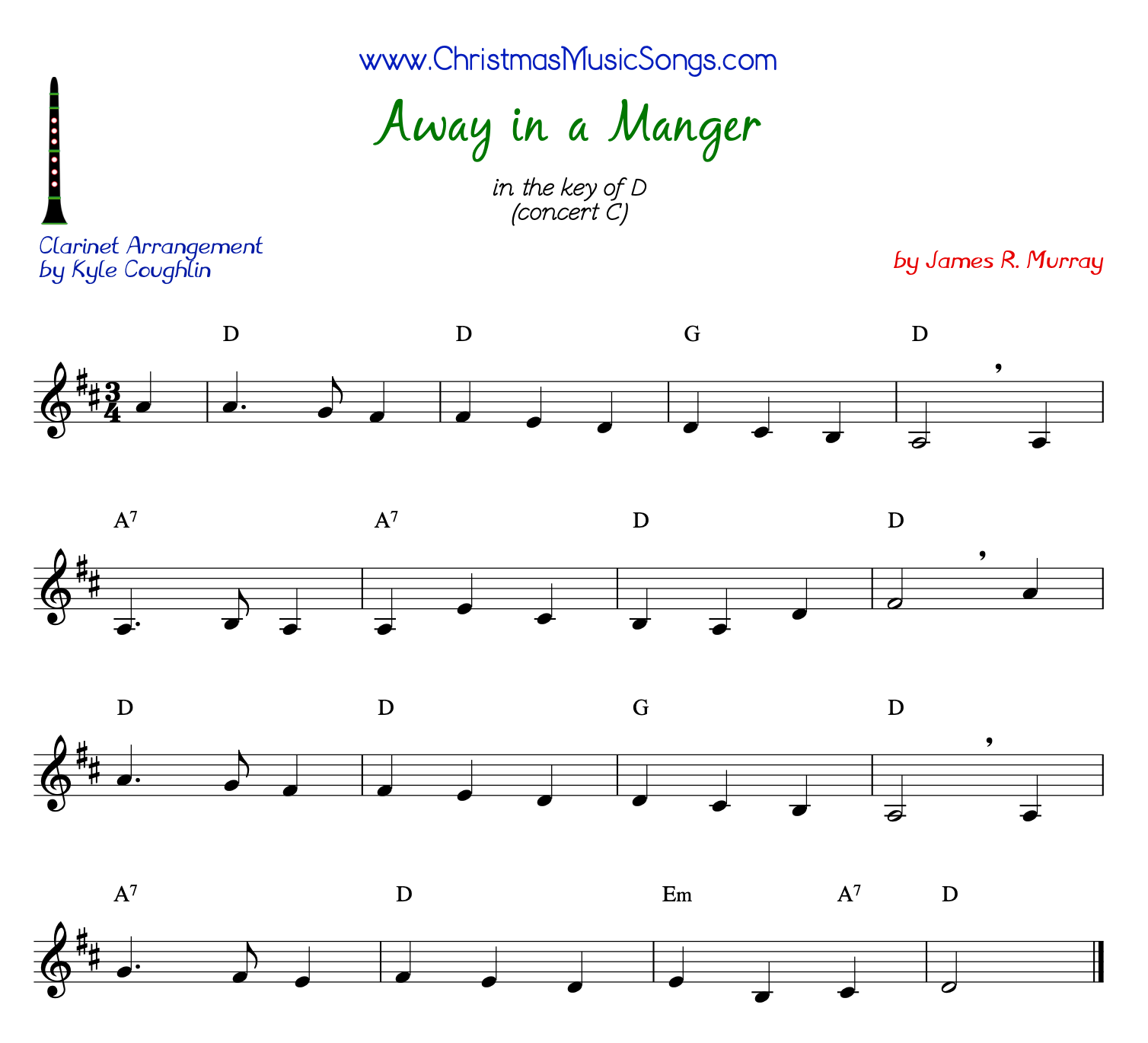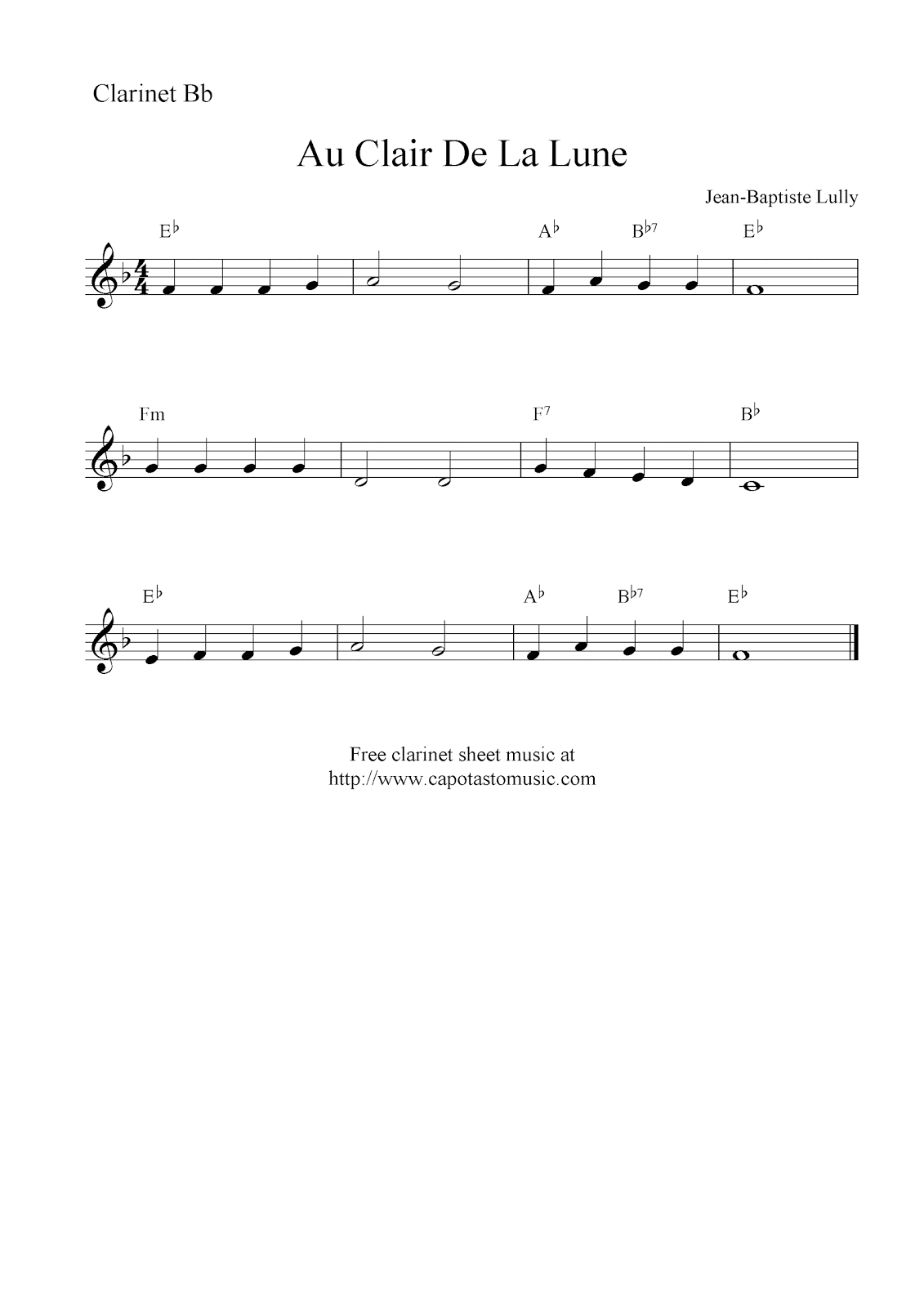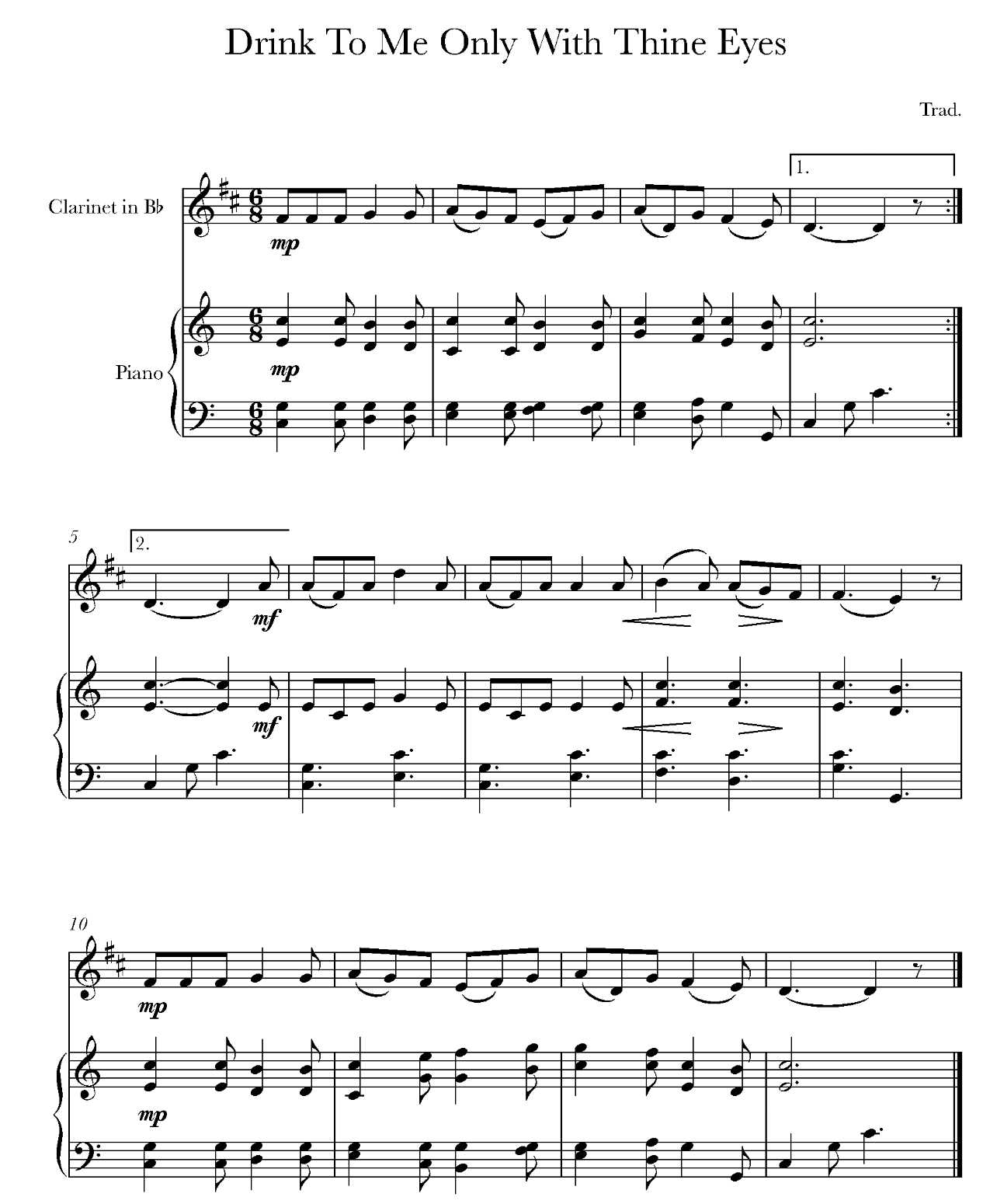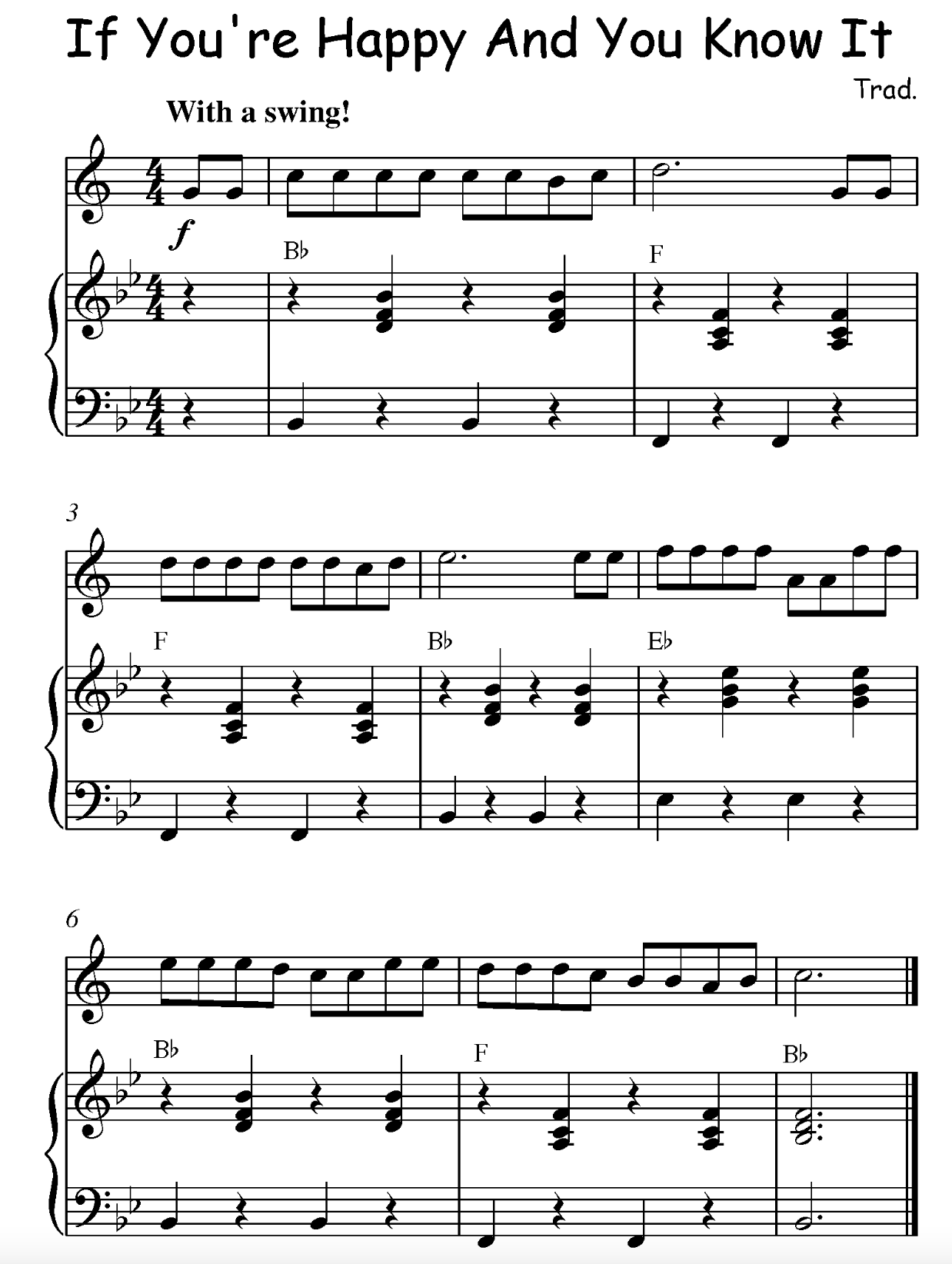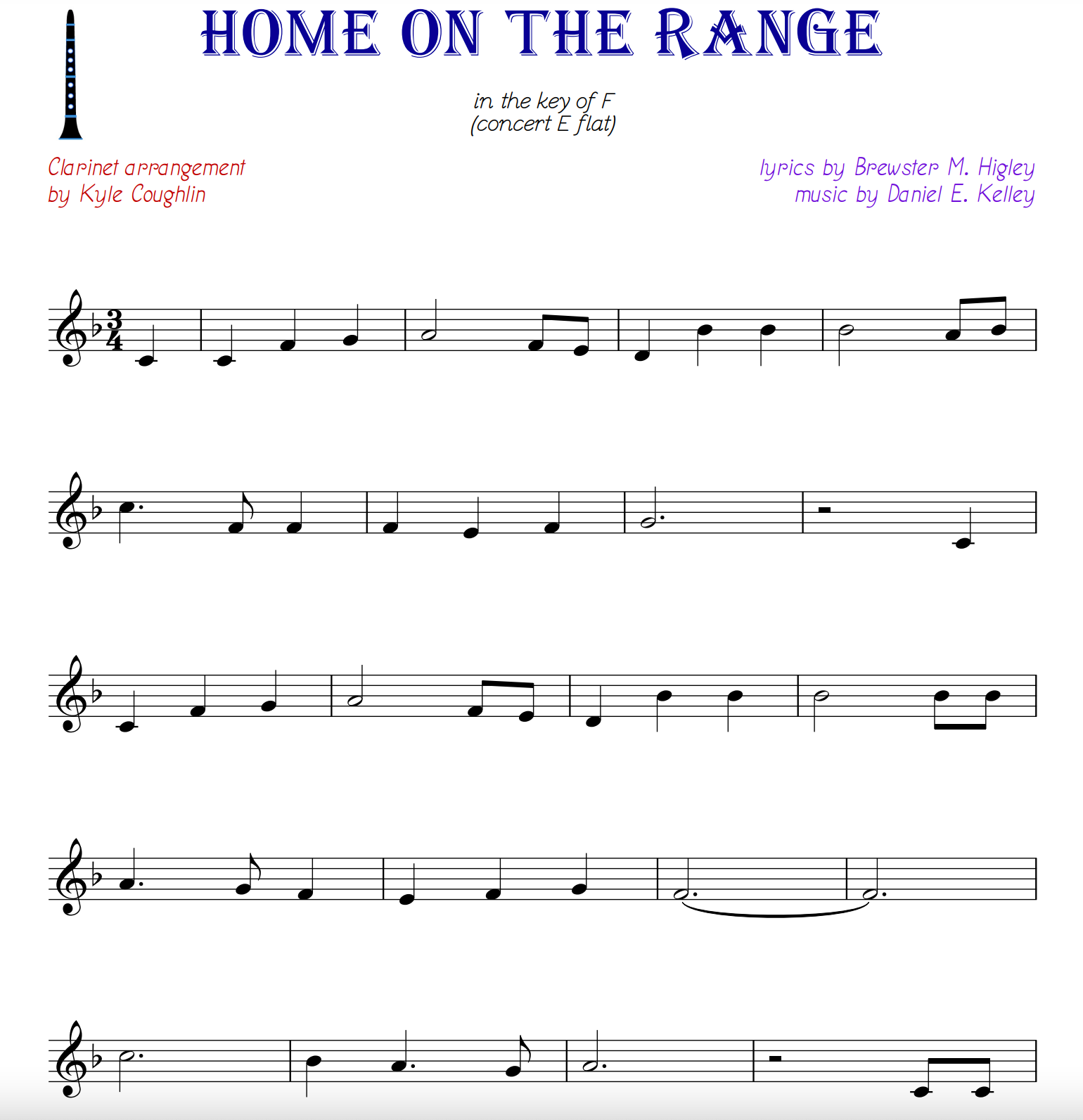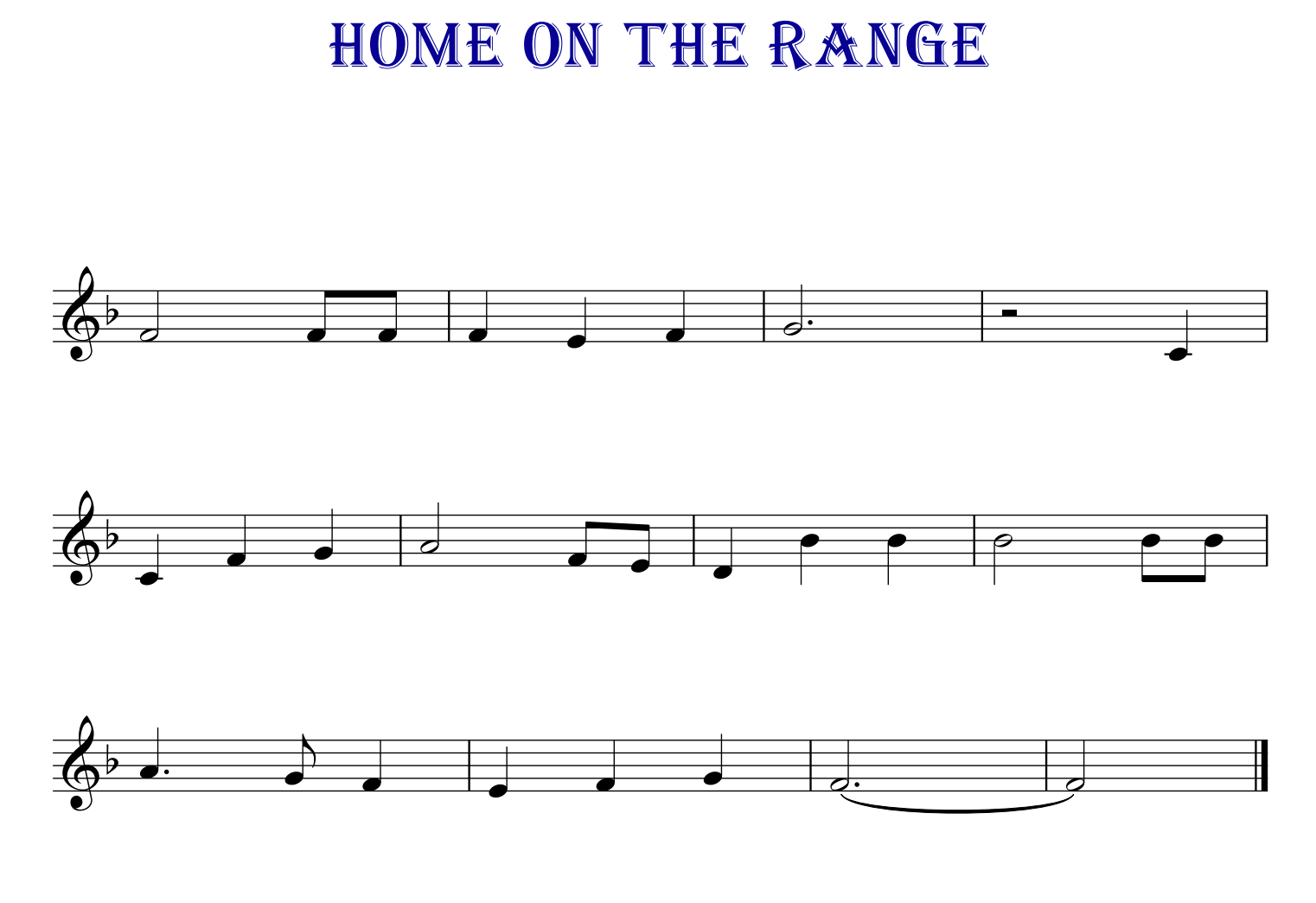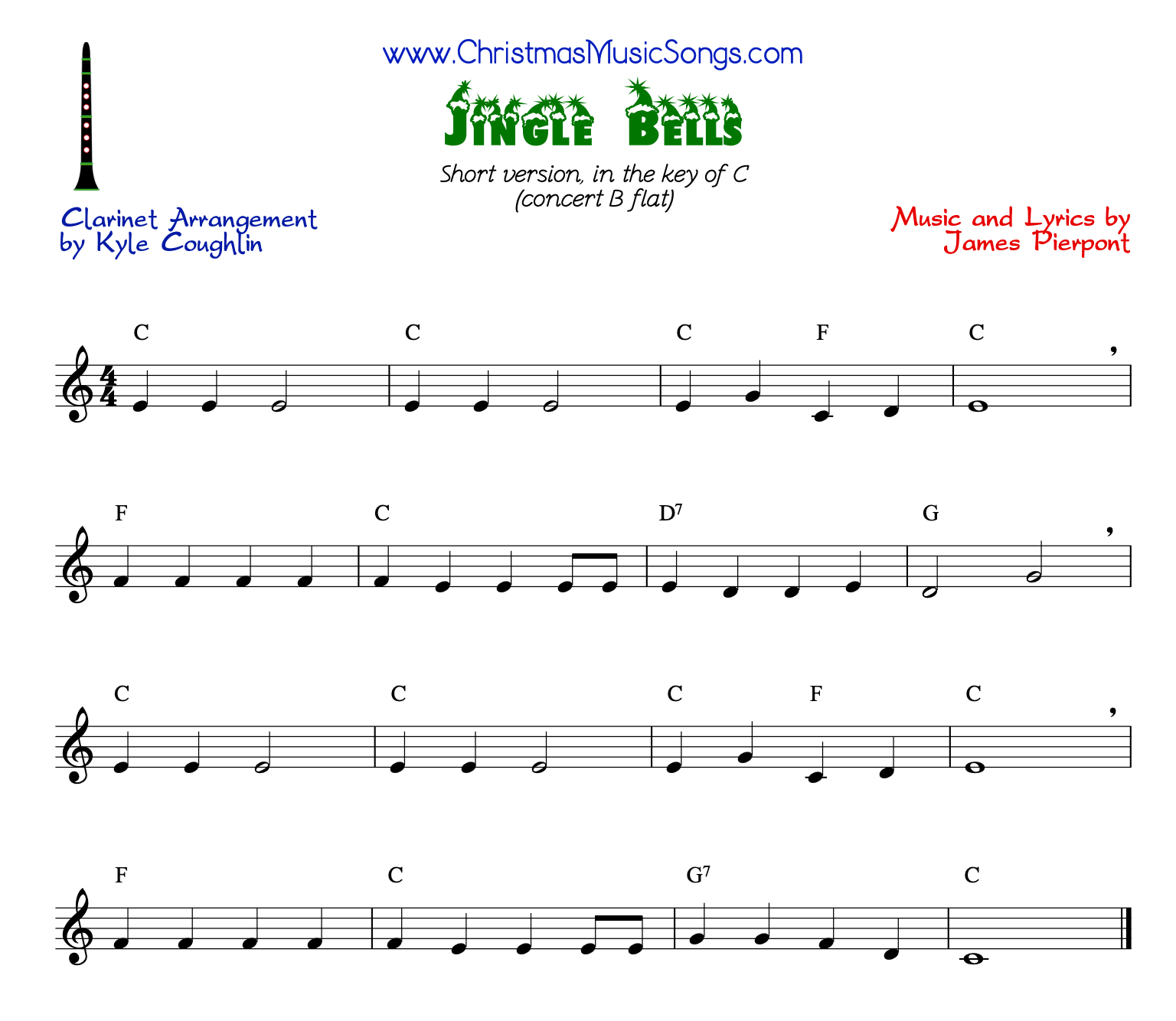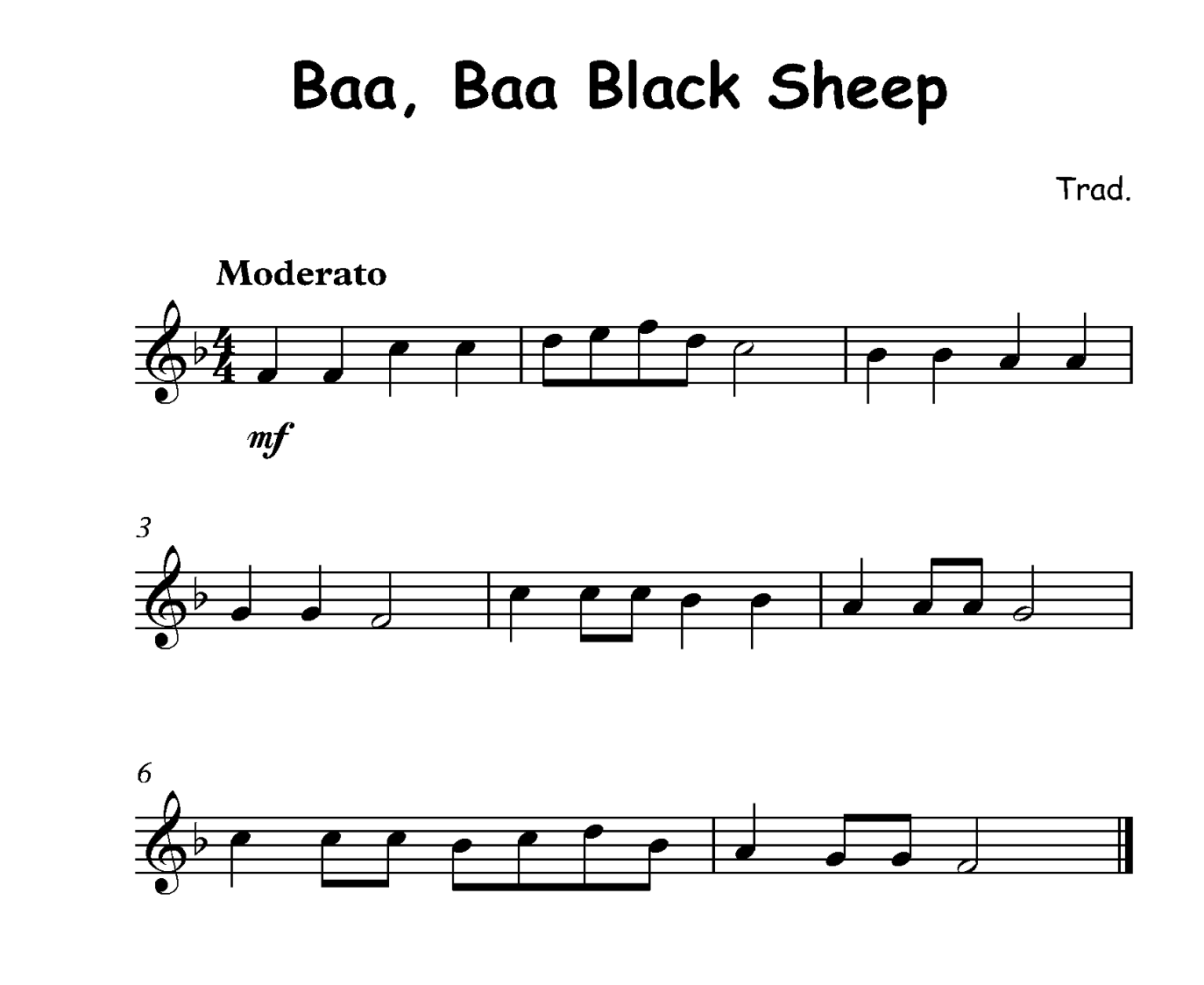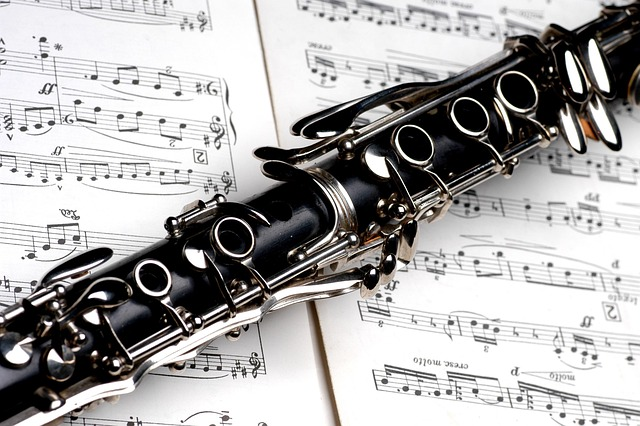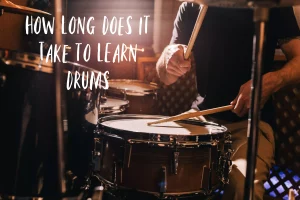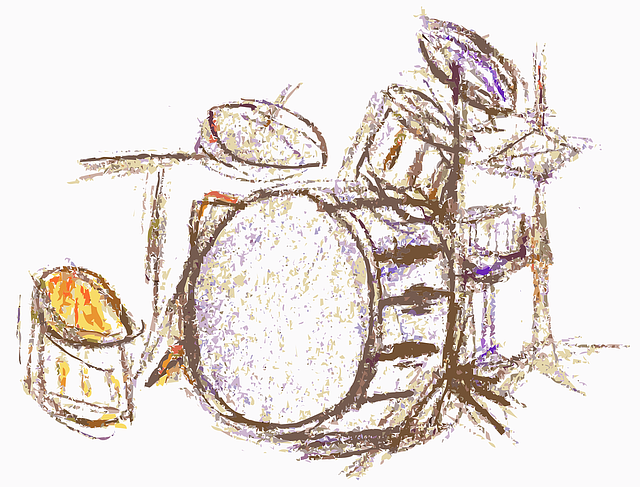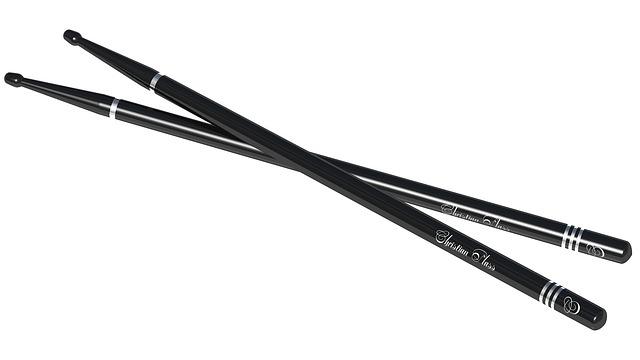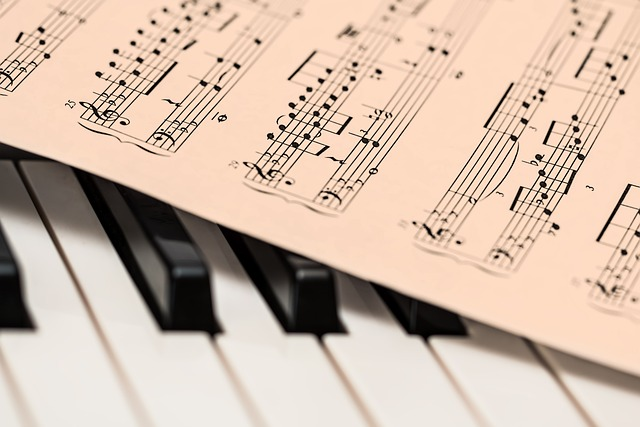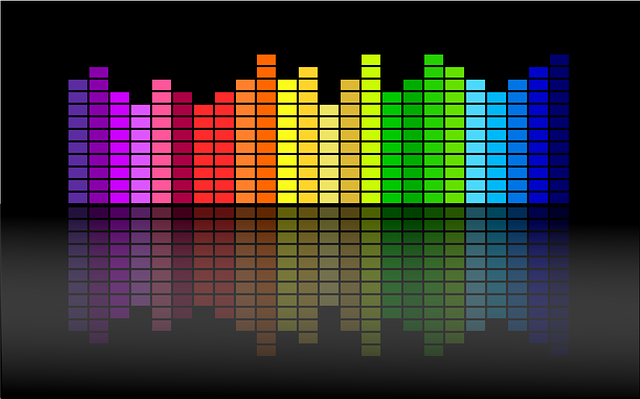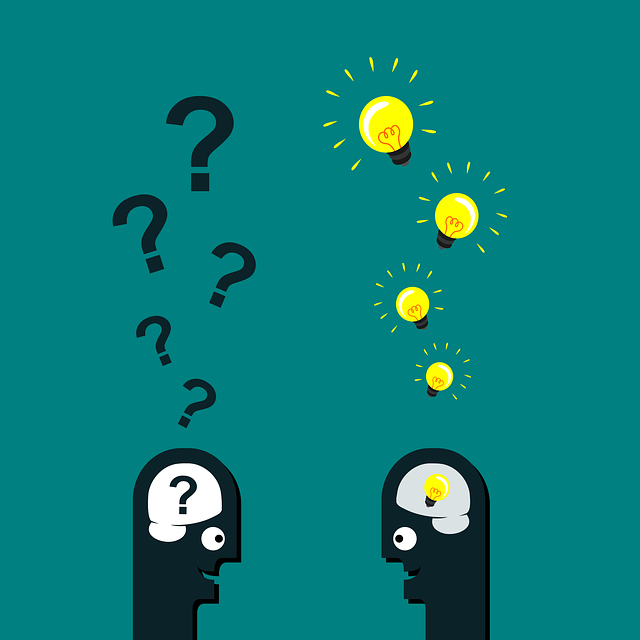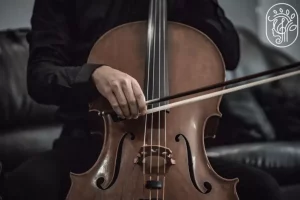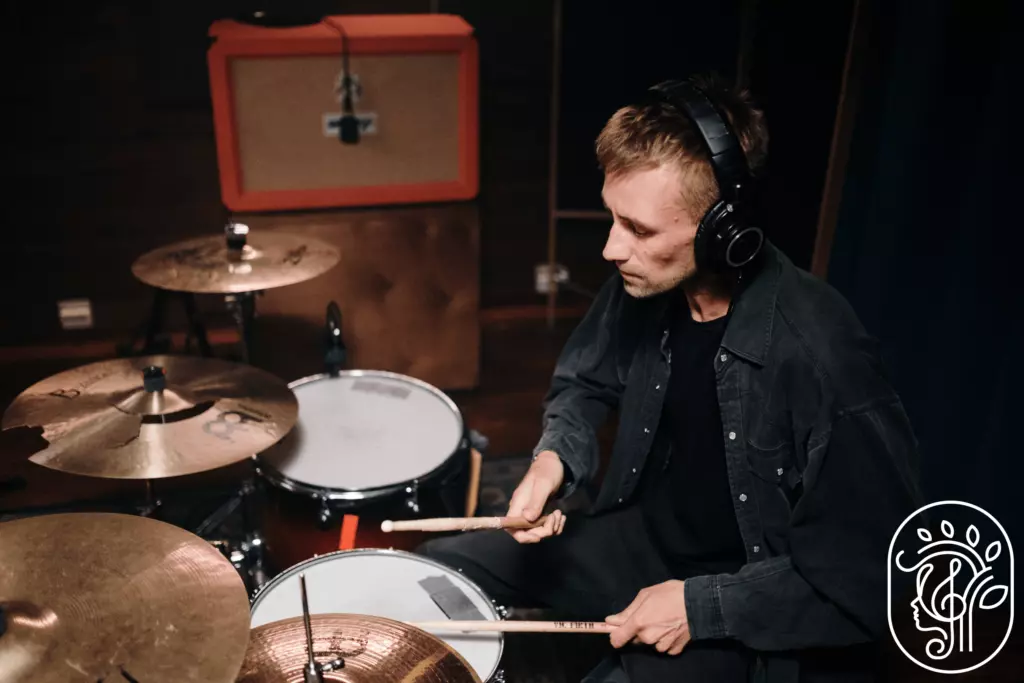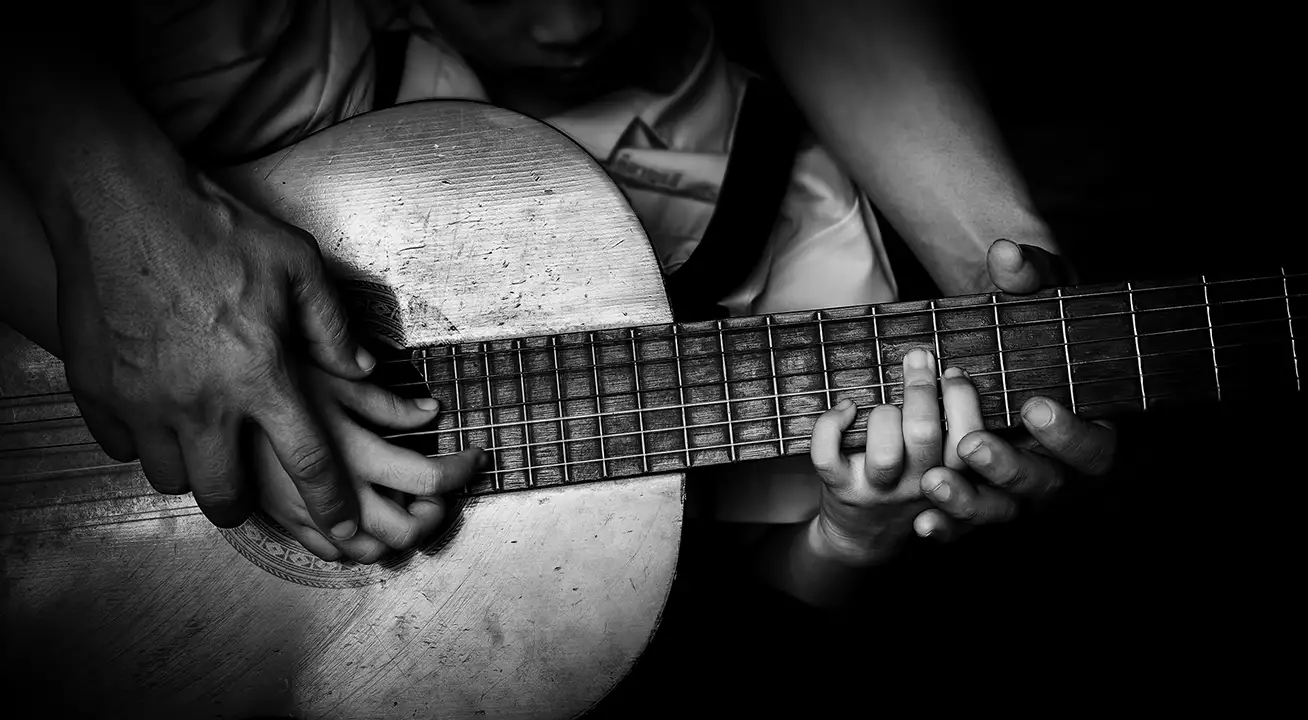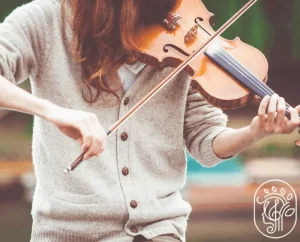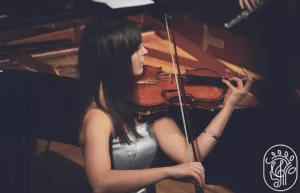Yo, new guitar players! You ready to shred like a boss and become a guitar god? Let’s do this. We’re about to embark on a legendary journey to guitar dominance. In this lesson, “How To Learn The Guitar Yourself,” we’ll cover all the crucial tips and tricks you need to know to start killing it on the guitar.
We got you covered, whether you’re buying your first acoustic or electric guitar or teaching yourself how to play. But don’t worry, we ain’t gonna overload you with too much info all at once. We’ll take it step by step and help you learn at your own pace.
So grab your guitar, start practicing, and let’s begin this epic quest to master the guitar and become a guitar legend!

How to Buy your first guitar?
So you’re ready to buy your first guitar? Sick! But before you hit the store, let’s talk about some important things to think about when you’re shopping for your first guitar.
How Much Does a Guitars Cost?
First up, we got the dough. You might not wanna drop a ton of cash on a fancy guitar right out the gate as a beginner. That’s totally cool!
There are plenty of affordable options out there that will get the job done. Just make sure you’re not sacrificing quality for the price.
You might have heard that a top-notch guitar will run you anywhere from $300 to $500, but don’t worry. There are plenty of excellent guitars in the $100 to $200 range.
And don’t forget those “package” deals that come with the guitar and essential accessories like a tuner and gig bag. These packages can be a total steal for beginners, giving you everything you need to get started in one convenient bundle.
But don’t get too caught up in the price tag. Just because a guitar is more expensive doesn’t mean it’s automatically better. There are plenty of affordable options that can still rock your socks off.
Do your research, try out a few guitars, and go with the one that feels comfortable and sounds good to you. Check out this article too Best guitars for beginners 2022: become a star in the making with 9 beginner-friendly acoustic and electric guitars.
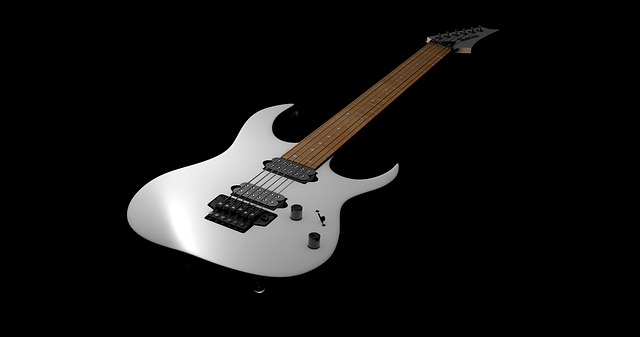
Electric Guitar vs. Acoustic Guitar vs. Classical Guitar
Next up, we got the style. You want that classic acoustic sound or you more into the electric, rock n’ roll vibe?
Whatever your preference, make sure you choose a guitar that speaks to your personal style.
Here’s a little pro tip: acoustic guitars are the way to go for beginners. Some might think, “But I wanna shred like Jimi Hendrix!” But trust me, you can still kill it on an acoustic.
But here’s why they’re the best choice for beginners: classical guitars have a wider neck, which can be tough for younger students or those with smaller hands to handle when learning guitar.
And electric guitars, while super cool, require an amplifier to be played, so you’ll need to spend extra cash on that gear.
Acoustic guitars, on the other hand, are simple and require no additional equipment, making them the perfect choice for beginners to learn guitar.

Condition of Guitar
Before you hand over your hard-earned cash, it’s important to check the guitar’s condition to ensure you’re getting a quality instrument.
Now, if you’re buying a brand-spankin’ new guitar, these issues might not be a concern. But if you’re going the used route, listen up! Here’s what you need to do:
- Run your hand up and down the neck of the guitar to make sure it’s smooth and splinter-free.
- Flip the guitar over and check the heel for any cracks or gaps.
- On the front of the guitar, check the bridge by running a pick between the bridge and the body. No gaps allowed!
- With minimal effort, check the string height by pressing down on the first, second, and third frets. When you reach the 12th fret, the distance from the top of the fret to the bottom of the string should be no more than three times the distance at the lower frets. The guitar might have a warped neck or a bridge that’s too high if it’s more like five times.
By following these steps, you’ll be able to make sure you’re getting the best guitar for your buck!
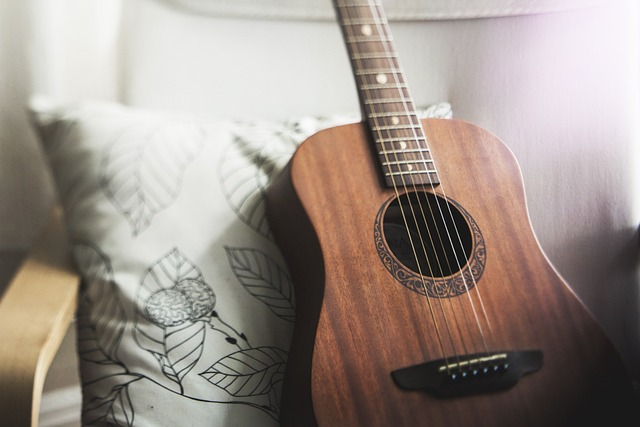
Where to buy your guitar
Finally, we’ve got where you’re purchasing. Before scouring the pawn shops, flea markets, and yard sales, let me give you a little advice: stick to the retail music shops or reputable online retailers.
I know those other options might seem tempting, but as a beginner, it’s best to avoid them unless you’re shopping with someone who knows what they’re doing.
Trust me, you don’t want to end up with a lemon of a guitar just because you weren’t sure what to look for in terms of damage or quality.
So, where should you go? A local music retail shop is always a safe bet. You can check out a bunch of different guitars and get the chance to try them out before you buy.
If you’re buying online, make sure you’re dealing with a reputable seller. If you’re buying in person, make sure to shop around and compare prices at different stores.
Let’s Start With The Basics
We all got to start with the basics. That’s right, even the greatest guitarists like Steve Vai and Eddie Van Halen started learning the foundations.
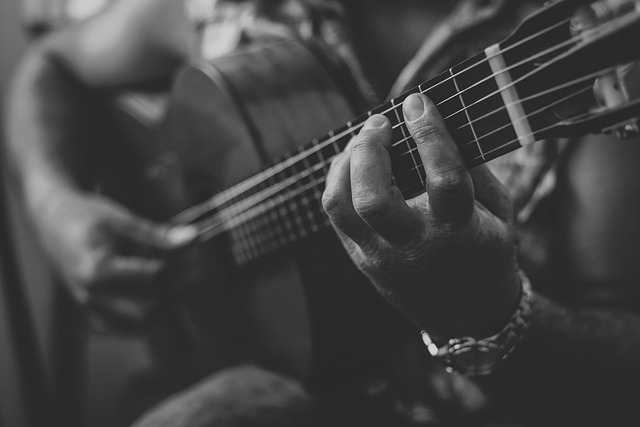
So, let’s get started on your journey to guitar greatness by focusing on these essential concepts:
Properly Setting Up Your Guitar – The first step to becoming a rockstar is making sure your guitar is in top shape. This includes having all six strings properly tuned and intonated and having a comfortable action. Don’t know what that means? No problem! Just head to your local guitar shop and ask a professional for help. And if you need help learning to tune your guitar, make sure to take a look at our article How to Tune Your Guitar Like a Pro: A Beginner’s Guide.
Identifying String Names and Notes – Another crucial aspect of becoming a guitar pro is knowing the names of each string and the notes they produce. The guitar has six strings, with the thickest (leftmost) string being the sixth string and tuned to an E note, and the thinnest (rightmost) string being the first string, also tuned to a high E note.
Understanding Frets – Frets are the spaces between two fret bars on the neck of your guitar. These are the spaces you press down on with your fingers to play notes. We start counting frets from the top of the guitar neck, with the first space between the neck and the fret bar being the first fret, followed by the second fret, and so on.
How to Read Guitar Chord Charts
You might wonder, how do we read those confusing chord diagrams? No problem! It might seem intimidating initially, but with enough practice sessions, you’ll be reading and playing chords like a pro in no time. Here’s what you need to know:
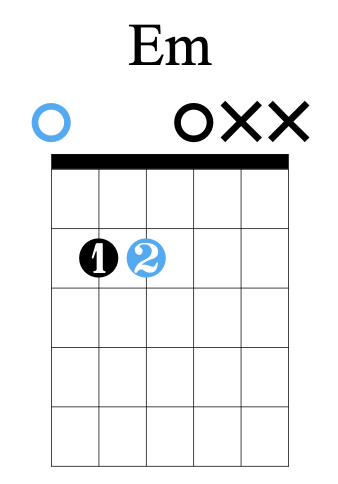
- Get the lay of the land. Chord diagrams consist of six vertical lines representing the guitar’s six strings and 6 horizontal lines representing the Frets. The dots or circles on the lines represent where you should place your fingers. The numbers inside the dots tell you which finger to use (1 = index, 2 = middle, 3 = ring, 4 = pinky).
- Know which strings to play. Above the diagram, you will see If there’s a “0”, you play that open string. If it’s an “X,” you skip it.
- Place your fingers on the frets. Using the dots and numbers as a guide, put your fingers on the correct frets and strings. Make sure your fingers are positioned correctly, and you’re not accidentally muting any strings.
- Familiarize yourself with the basic chords. Start with the most common chords, like C, A, G, E, and D. Practice guitar playing these chords and get comfortable with their sound and shape.
- Strum it up! Once your fingers are in place, strum the chord downward. Experiment with different rhythms to find the sound you like best.
Easy Guitar Chord For Beginners
You might be thinking, “But I want to play like Slash! I don’t want to stick to easy chords!” Trust me, I get it. But the truth is, some of the most iconic songs in history were built on a foundation of simple chords.
Just listen to classics like AC DC’s “Back in Black” or Oasis’s “Wonderwall.” These songs use a combination of just a few chords, like A Major, D Major, G Major, and E Minor.
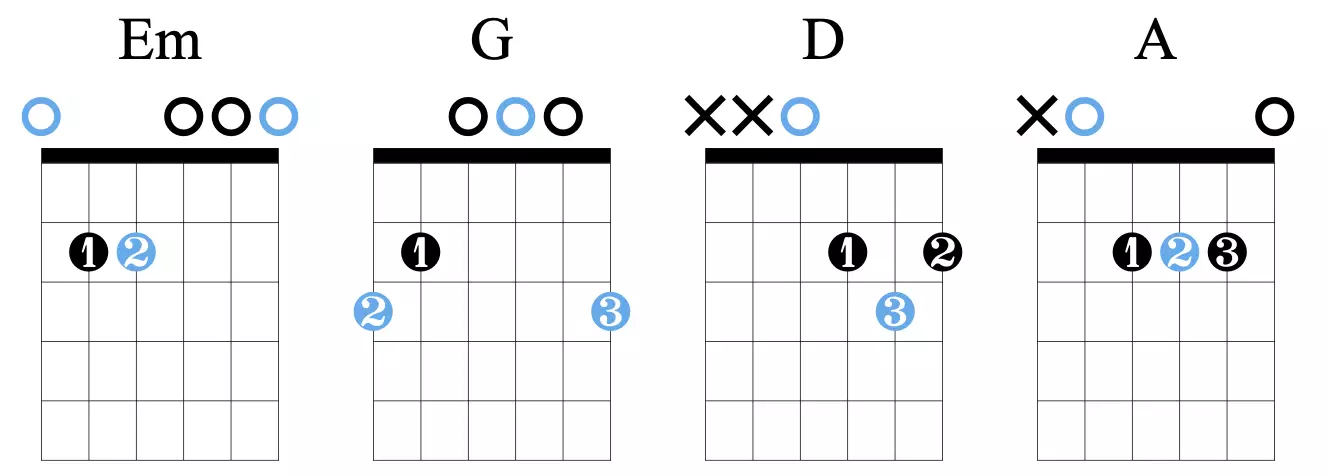
Not only are these basic guitar chords easy to play, but they also play a primary role in constructing so many memorable songs. So don’t be afraid to start with the basics and build your way up.
You’ll be surprised at how far you can go with just a few easy chords.
Strumming patterns and rhythm:
Congratulations on learning how to play your first guitar chords! You’re well on your way to becoming a guitar master. Now, let’s take it a step further and dive into some basic strumming practice sessions to get you started on the right foot.
First things first, let’s start with the basics. Familiarize yourself with some basic patterns and practice them with various chord progressions.
You can use a metronome or drum machine to help keep a steady beat. The key is to practice regularly.
Next up, let’s talk strumming technique. You can use your thumb or a pick or alternate between the two. And feel free to experiment with different rhythms, like 8th notes, triplets, or 16th notes.
The more you play around with different strumming patterns, the more comfortable you’ll become and the more your own style will emerge.
Now, let’s talk about the feel of the music. Different songs and styles will have their own unique rhythms and feel, so make sure you’re paying attention to what works best for the music you’re playing.
And if you want to take it to the next level, try playing along with a drum track or backing track to get a feel for playing with other musicians.
And most importantly, have fun! Don’t be afraid to experiment and try new things. The more you play around with different strumming patterns and rhythms, the more you develop your sense of timing and groove, and the more your style will shine through.
Learn to Read Guitar Tabs
Reading guitar tablature is a crucial skill for any self-taught musician. With tabs available for almost any song, you can quickly learn how to play your favorite tunes by simply reading the tab. A typical guitar tab looks like this:

The six horizontal lines represent the guitar strings, and the numbers on the lines represent the frets you need to place your finger. Similarly to a standard musical staff, the lines are in order of pitch. The bottom line is the lowest-pitch string, the big E, and the top line is the highest-pitch string, the small E.
But while learning songs by ear is valuable, it can sometimes be time-consuming – especially if the song is fast, long, or complex with many chord changes or tricky guitar solos.
That’s where websites like www.ultimateguitar.com come in handy. They offer accurate guitar tabs for a wide range of songs and even include ratings from other guitarists to help you know which tabs are the most reliable.
Master the Art of Scales

Okay, so you’ve got your chords and strumming patterns down pat. Now it’s time to take your guitar skills to the next level by learning the basics of music theory and playing scales like a pro.
Guitar scales are a sequence of notes played in a specific key, ascending or descending. If you recall, we discussed the names of the strings earlier – in standard tuning, the notes of the strings are EADGBE.
Similarly, every scale starts and ends on the same note, with the first note being the lower octave version and the last note being played one octave higher.
Usually, a scale consists of seven notes, but adding in that 8th note, an octave higher version of the first note, gives a sense of completion to the scale.
Mastering scales will give you the skills to create your own guitar solos and melodies and open up a new world of guitar playing. So don’t be afraid to dive into the world of scales and start shredding like a pro!
How hard is it to teach yourself guitar?
As a self-taught guitarist, I can personally vouch for the fact that it is possible to teach yourself guitar.

Just look at some of the most iconic guitarists in the world – Jimi Hendrix, Eric Clapton, and Prince are self-taught. And with the abundance of online resources available today, it’s easier than ever to get started on your journey as a self-taught guitarist.
But just because it’s possible to teach yourself guitar doesn’t mean it will be easy. Like any worthwhile pursuit, learning the guitar requires consistent effort, dedication, and practice. You must commit to regularly putting in the time and effort to see progress and improve your skills.
Being self-taught also means that you have to hold yourself accountable and discipline yourself to practice regularly. While this can be both a blessing and a curse, it ultimately gives you the freedom to chart your own musical journey on your own terms. And it will all be worth it if you’re able to play your favorite songs and even compose your own on the guitar.
So if you’re considering teaching yourself guitar, don’t be intimidated. With patience, persistence, and a lot of practice, you can become a rock-solid guitarist like Jimi, Eric, and Prince.
Remember to be consistent, stay dedicated, and never give up – the journey may be challenging, but the rewards are worth it. So, keep at it and enjoy the process!
Do’s And Don’ts Of Teaching Yourself Guitar
Here are some dos and don’ts to keep in mind as you embark on this musical adventure:
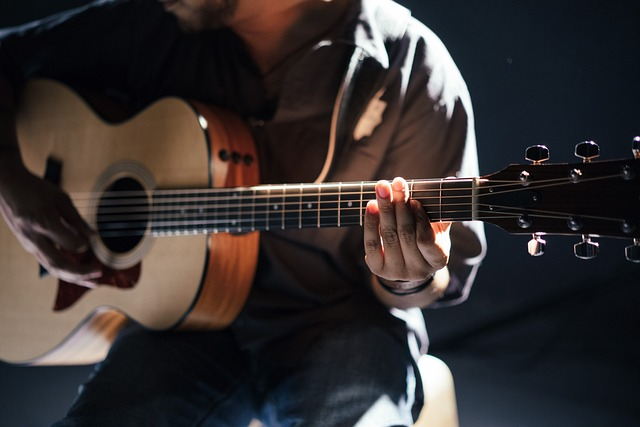
The DO’s
DO remember to warm up your fingers before each practice session. You can do this by working on a few scales or doing finger exercises.
DO practice regularly, even if it’s just for 15 minutes a day. As a self-taught guitarist, you won’t have the structure of regular lessons to guide you. Practicing guitar regularly and establishing a routine will help you hone your skills and stay on track.
DO be patient with yourself. It’s normal to struggle and make mistakes when learning a new skill, so don’t get discouraged. Celebrate your small wins and keep pushing through the tough moments.
DO start easy and master the basics. Set smaller goals for yourself and pace yourself. Work on nailing basic songs, understanding music theory, and strumming patterns before trying more challenging pieces.
DO record yourself and listen back to your practice sessions. This will help you identify areas for improvement and track your progress.
DO try new things and push yourself out of your comfort zone. Don’t be afraid to tackle more difficult scales, chords, and techniques. These will take time and practice to master, but they’ll be worth it in the end.
DO practice with a metronome to develop your sense of timing and rhythm. You can start at a comfortable tempo and gradually increase the speed as you get more comfortable.
DO jam with others and seek out more experienced guitarists to learn from. Playing with others can be a fun and motivating way to improve your skills.
DO learn your favorite songs to stay inspired and motivated. Learning music that speaks to you emotionally is much more enjoyable than dull, boring songs you don’t have a connection with.
The DON’Ts
DON’T get too caught up in the price tag when shopping for your first guitar. An expensive guitar doesn’t automatically mean it’s better. Do your research and try out a few options to find the one that feels comfortable and sounds good.
DON’T neglect the condition of the guitar when buying used. Make sure you check for smoothness of the neck, cracks or gaps in the heel, and proper spacing between the bridge and the body.
DON’T reach too high too early and set yourself up for frustration and disappointment. Start with simpler pieces and gradually work your way up to more challenging ones.
DON’T skip challenging lessons or try to rush through them. It’s important to take your time and thoroughly master the fundamentals before moving on.
A few more things to consider when learning guitar

Find a Practice Routine that Works for You
Once you’ve got the basics down, it’s time to start practicing regularly. This is where a lot of people get stuck. How often should you practice? How long should your practice sessions be?
The truth is, there is no one-size-fits-all answer to these questions. It all comes down to your personal goals and how much time you have to devote to practice.
Some people prefer to practice for shorter periods of time each day, while others prefer to have longer, more intense practice sessions a few times a week. The key is to find a routine that works for you and stick with it.
Get a Guitar Teacher or Take Online Lessons
While it is possible to teach yourself guitar, many people find it helpful to have a teacher or mentor to guide them along the way. A good guitar teacher can help you improve your skills, answer any questions you may have, and keep you motivated.
If you don’t have access to a local guitar teacher, plenty of online guitar lessons are available at Music 4 Humans. These can be a great option for busy schedules or for those who don’t have a guitar teacher in their area. Make sure to research and find a reputable source for your lessons.
Be Patient and Have Fun!
Learning to play guitar can be a challenging and rewarding journey. Don’t get discouraged if you don’t see progress immediately – it takes time and practice to improve.
And most importantly, remember to have fun! Playing guitar should be enjoyable, so don’t put too much pressure on yourself. As long as you’re having a good time, you’ll be more motivated to keep practicing and improving.
So grab your guitar, get ready to rock out, and have fun on your journey to becoming a guitar hero!
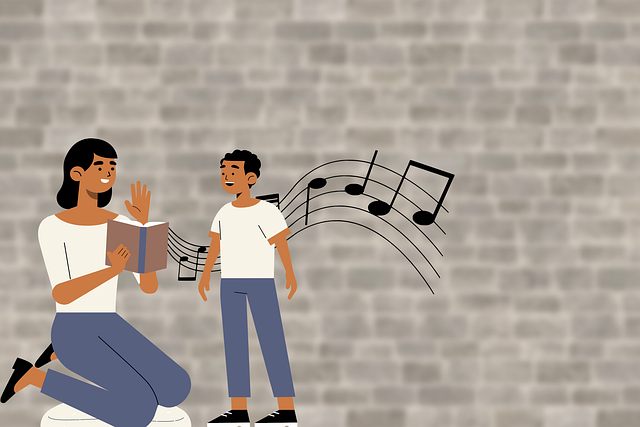
Learning The Guitar with Music 4 Humans
Are you tired of trying to fit guitar lessons into your busy schedule? Do you wish you could learn on your own time, in the comfort of your own home? Well, you’re in luck! Music 4 Humans has got you covered.
With Music 4 Humans, you can learn how to play guitar on your own schedule, whenever it works for you. So whether you’ve got a few minutes in the morning, during lunchtime, or in the middle of the night, you can get some guitar instruction thanks to Music 4 Humans.
Age ain’t nothin’ but a number; with Music 4 Humans, you can learn the guitar no matter how old you are. No matter your ability, you can play. Music 4 Humans is perfect for learners of all types and includes classes that allow people of all abilities to learn a new instrument successfully.
Righty, lefty, it doesn’t matter. Music4Humans is available in both right-handed and left-handed options, so you can learn to play the guitar no matter which hand you prefer. So what are you waiting for? Start strumming with Music 4 Humans!
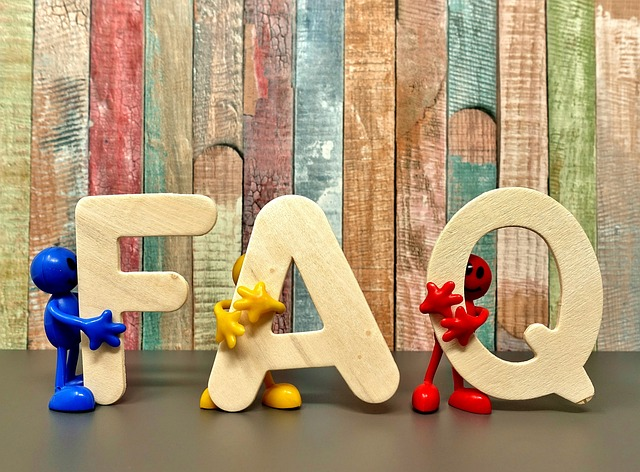
FAQs
Q: I’m a complete beginner. Can I still learn guitar with this lesson?
A: Absolutely! This lesson is designed specifically for beginners, so don’t worry if you’re starting from scratch. We’ll cover all the essential skills and techniques you need to know to get started on the right foot.
Q: Do I need a specific type of guitar to follow along with this lesson?
A: Not necessarily. While some techniques may be specific to certain types of guitars (such as electric or acoustic), the majority of the content in this lesson will apply to any guitar. Just make sure you have a guitar in good condition and properly tuned, and you’ll be good to go.
Q: How long will it take me to learn guitar?
A: It’s impossible to answer this question definitively, as everyone learns at a different pace. Some people may pick up the basics quickly, while others may need more time to master certain techniques. The important thing is to be patient and consistent with your practice. You will make progress if you put in the time and effort.
Q: I’m having trouble with a specific technique. Can you help me?
A: Absolutely! If you’re having trouble with a specific technique or concept, don’t hesitate to reach out for help. You can comment on this blog post or send us a message, and we’ll do our best to help you. Remember, we’re all in this together!





